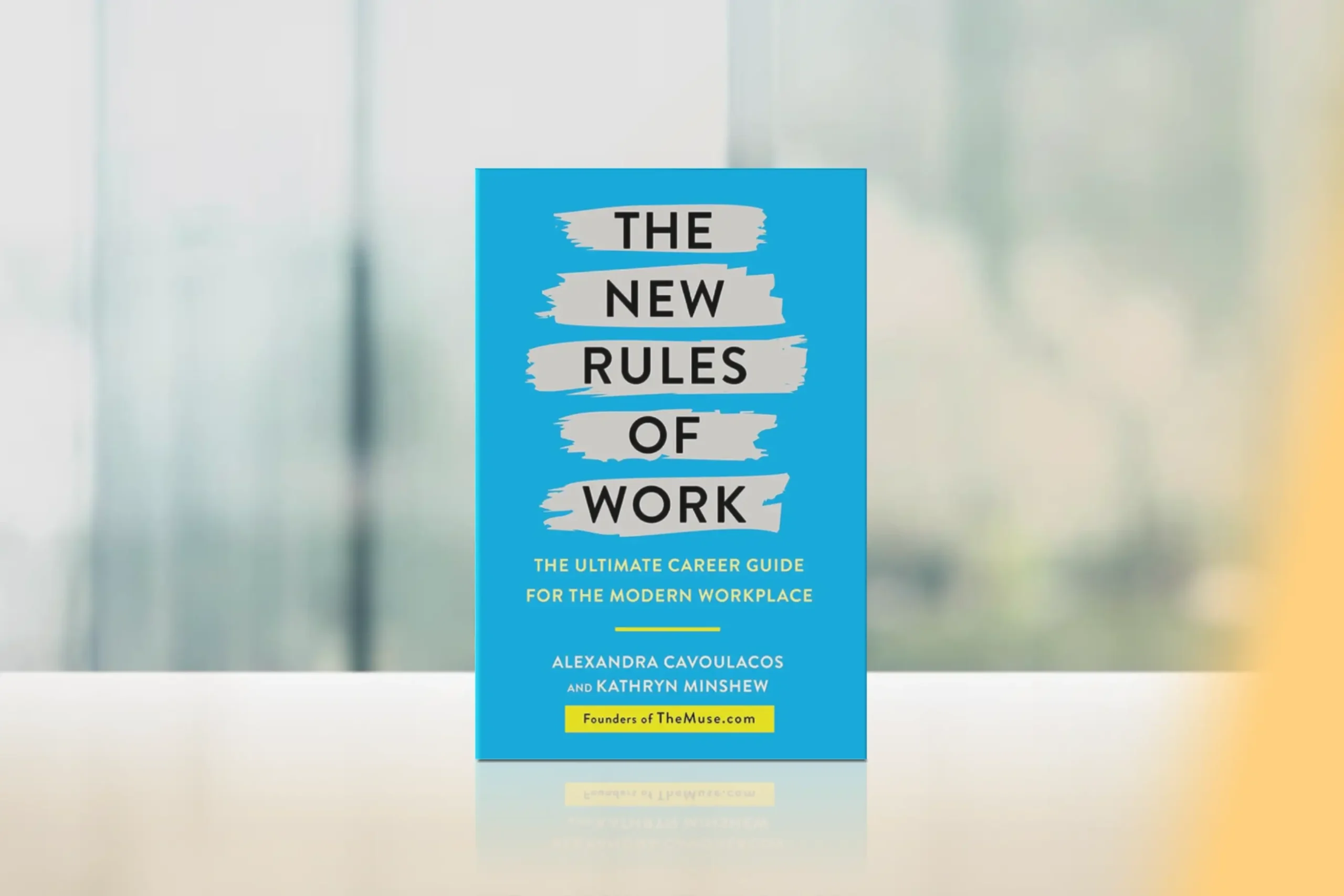Deciding to leave the traditional workforce can be both thrilling and daunting. This guide shows how to decide if now is the right time to work for yourself, whether you’re considering becoming your own boss, starting a freelance career, or launching your own business. By exploring financial readiness, market opportunities, and practical steps for self-employment, you’ll gain clarity and confidence to take the leap toward entrepreneurship and financial independence.
Inside this article:

1. Why Now Is the Right Time
Making the leap from employee to entrepreneur is thrilling—but timing is everything. Many dream of flexibility, independence, and building something of their own, yet hesitate due to financial risks and uncertainty. The real challenge is knowing when to take the step.
The global self-employed or freelancers workforce has now reached 1.57 billion people, contributing $4.7 trillion to the world economy. This surge isn’t driven solely by the desire for flexibility—it reflects a growing recognition that traditional career paths may not provide the fulfillment and financial freedom we seek.
Success Facts:
- Less than 70% of solo businesses survive their first two years with proper preparation
- Solo professionals report 60% higher satisfaction than traditional employees
- Maintaining 6–9 months of savings significantly increases transition success
- AI and specialized skills command over 30% premium rates globally
- Launching in January–February often aligns best with business budget cycles
These statistics are encouraging, but success requires more than optimism. It demands strategic planning, honest self-assessment, and actionable steps. This article will guide you through the framework for evaluating your readiness, explore the paths available, and provide a roadmap for building a sustainable solo career. By the end, you’ll have the clarity and confidence to make this pivotal decision with your eyes wide open.
Key Takeaway: Market validation through others seeking your expertise matters more than feeling completely ready—most successful transitions happen at 70-80% preparation.

2. What It Means to Work for Yourself
Working for yourself fundamentally means taking complete ownership of your professional destiny. It’s the transition from being an employee who trades time for a predetermined salary to being an entrepreneur, freelancer, or business owner who creates value directly in the marketplace.
What truly defines self employment: you become responsible for finding your own clients, setting your own rates, managing your own schedule, and ultimately determining your own income ceiling. There’s no HR department, no guaranteed paycheck, and no built-in structure. Instead, there’s freedom, flexibility, and unlimited growth potential—along with the responsibility to create all of these from scratch.
6 Core Skills for Solo Success:
- Time Management & Self-Discipline – Staying organized and productive without external supervision
- Financial Literacy – Handling budgeting, taxes, and cash flow to keep your business profitable
- Marketing & Networking – Promoting yourself effectively and building strong client relationships
- Communication & Negotiation – Setting clear expectations, collaborating, and securing fair deals
- Adaptability & Problem-Solving – Navigating uncertainty and overcoming challenges with creativity
- Resilience & Stress Management – Maintaining focus, energy, and confidence through ups and downs
The psychological shift is perhaps the most significant aspect. You move from being risk-averse (keeping your job safe) to being risk-intelligent (taking calculated risks for potentially greater rewards). You transition from having one income source to potentially having multiple revenue streams.
Most importantly, you evolve from asking “What does my boss want?” to “What does the market need, and how can I provide it better than anyone else?”
Related reading: “So Good They Can’t Ignore You” by Cal Newport explores how building rare and valuable skills creates career capital, while “The $100 Startup” by Chris Guillebeau shows how to launch a business with minimal investment by leveraging existing skills.
Key Takeaway: Success in self-employment requires mastering six core skills while making the psychological shift from employee security to entrepreneurial opportunity.

3. Are You Ready to Work for Yourself?
Have you ever caught yourself sketching business ideas during a budget meeting? Or found yourself becoming the unofficial consultant everyone turns to for advice? These aren’t random occurrences—they’re signals.
The transition to solo work rarely begins with a dramatic resignation letter. Instead, it starts with subtle shifts in how you view your work and your place in the professional world. You might notice colleagues seeking your expertise more frequently, or perhaps you’ve started side projects that generate income almost accidentally.
Recognition patterns often emerge gradually:
- Industry contacts begin approaching you for advice or collaboration
- Your weekend projects start generating consistent revenue streams
- You feel increasingly constrained by corporate processes and approval chains
- Headhunters contact you regularly, suggesting your skills are in demand
- You naturally stay current with industry trends and emerging technologies
Financial Restlessness and Market Validation
You’ve started calculating what it would take to double or triple your current income, and the traditional career ladder feels frustratingly slow. You recognize that your earning potential is artificially capped by salary bands and annual review cycles, while your skills and ambition far exceed those limitations. Perhaps clients, vendors, or industry contacts have hinted they’d hire you directly if you were available.
Autonomy Craving and Creative Frustration
Bureaucracy makes you feel claustrophobic. You have ideas for improving processes, products, or services, but organizational politics or slow decision-making prevents implementation. You find yourself thinking, “I could do this better if I had full control.”
Lifestyle Design and Risk Tolerance Evolution
Your values around time, location flexibility, or work-life integration have shifted. The “security” of traditional employment no longer feels as secure as it once did. You’ve realized that having one income source controlled by someone else’s business decisions actually feels riskier than diversifying your income through multiple clients or revenue streams.
The 70% Readiness Principle
Here’s something that might surprise you: feeling completely prepared often means you’ve waited too long. The optimal transition timing occurs at 70-80% preparation—when you have solid skills, some market validation, and adequate financial preparation, but haven’t overthought yourself into paralysis.
Key Takeaway: Market validation through others seeking your expertise matters more than feeling completely ready—most successful transitions happen at 70-80% preparation, not 100%.

4. Ways to Work for Yourself
The landscape of solo work has expanded dramatically, offering paths that suit different personalities, skill sets, and financial goals. Let’s explore the most viable options:
- Freelancing & Contracting: Offer your existing professional skills on a project basis. Lower barrier to entry since you’re leveraging skills you already possess.
- Consulting & Coaching: Provide strategic expertise and guidance. Commands premium rates for experienced professionals who can diagnose problems and deliver solutions.
- Service-Based Business: Create a business around services for consumers or businesses. Examples include accounting, event planning, or digital marketing agencies.
- Creative & Content-Based Work: Build businesses around creative output through client work, original creations, or audience monetization via digital platforms.
- Online Business & E-commerce: From dropshipping to digital courses, these scalable models can generate passive income but require more upfront investment.
- Gig Economy & On-Demand Work: Platforms like Uber, TaskRabbit, and Upwork provide flexible income or serve as bridges while building other revenue streams.
- Real Estate & Investment-Based: Property investing, management, or sales can provide both active income and long-term wealth building opportunities.
- Franchising & Licensing: Work for yourself while following proven business models with established brand recognition and support systems.
- Hybrid & Portfolio Career: Combine multiple approaches for diversified income and reduced risk. Many professionals consult while building digital products or passive income streams.
Related reading: “The 4-Hour Workweek” by Timothy Ferriss demonstrates how to design lifestyle businesses that provide freedom and flexibility, while Building Your Personal Brand: From LinkedIn to Thought Leadership helps you establish credibility across multiple professional channels.
Key Takeaway: Choose the path that aligns with your existing skills and risk tolerance—you can always evolve into other models as you gain experience and confidence.

5. Self-Employment Readiness Assessment
This comprehensive assessment transforms abstract readiness concepts into concrete action steps you can complete over four weeks. By the end, you’ll have clarity on your strengths, identified gaps to address, and created a realistic transition timeline that reduces risk while maximizing your chances of success.
Before making any major career transition, smart professionals conduct thorough due diligence. This structured 4-week process ensures you’re making an informed decision based on data, not just desire.
Week 1: Self-Assessment and Vision Clarification
- Complete a comprehensive skills inventory and identify your top three marketable strengths
- Define your motivation for wanting to work for yourself and write a clear vision statement
- Research salary ranges and market demand for your skills in freelance/consulting markets
- Calculate your minimum monthly income requirements including business expenses
- Assess your current financial position and determine savings targets
Week 2: Market Research and Opportunity Analysis
- Identify five potential target client segments and research their needs and challenges
- Analyze three direct competitors and document their services, pricing, and positioning
- Create a basic value proposition that clearly differentiates your offering
- Interview two people currently working for themselves in your field
- Develop initial ideas for marketing and client acquisition strategies
Week 3: Financial Planning and Legal Preparation
- Research business structure options and consult with an accountant or attorney
- Create 12-month financial projections including conservative and optimistic scenarios
- Investigate business insurance requirements and obtain quotes
- Set up separate business banking and accounting systems
- Research any necessary licenses, permits, or certifications for your field
Week 4: Testing and Transition Planning
- Complete one small project or consultation as a test of your business concept
- Create a basic professional website and marketing materials
- Develop template contracts and proposal documents
- Network with five potential clients or referral sources
- Create a detailed transition timeline with specific milestones and deadlines
24-Hour Challenge: Write Your Commitment to Yourself
Write a one-page commitment that clearly states your decision to work for yourself, your timeline for the transition, your top goals for the first year, and the specific actions you’ll take in the next 30 days. This document will serve as a reference point for when challenges arise.
Related reading: “Atomic Habits” by James Clear provides the framework for building systems that support consistent progress, while The Art of Effective Goal Setting and Achievement offers proven methods for turning aspirations into measurable outcomes.
Key Takeaway: Completing this assessment provides a data-driven foundation for your transition decision, replacing uncertainty with clarity and action steps.

6. Guide to Becoming Your Own Boss
Forget the traditional business plan. Today, successful solo ventures follow an iterative, experiment-based approach that adapts to market feedback faster than traditional planning allows.
The Lean Solo Launch Method
Phase 1: Market Validation (30 Days)
Instead of spending months planning, spend one month testing. Reach out to five potential clients in your network. Don’t pitch services—simply ask about their current challenges in your area of expertise.
Phase 2: Minimum Viable Service (60 Days)
Create the simplest possible version of your service. Not your ideal offering but the minimum that solves a real problem. Price it fairly, deliver exceptionally, and document everything. Setup essentials:
- Business registration (some countries allow immediate online setup)
- Basic website (minimum one page explaining your service clearly)
- Payment processing (PayPal dominates globally, but regions prefer local options)
- Communication tools (WhatsApp, WeChat, Slack, what works in your industry or region)
Phase 3: Scaling Systems (90 Days)
Only after proving market demand should you build sophisticated systems. This prevents the classic mistake of perfect preparation without market validation. Focus on:
- Client onboarding processes that create excellent first impressions
- Pricing strategies that reflect value, not just costs
- Referral systems that leverage satisfied clients
- Learning systems that keep you ahead of market changes
Global Success Pattern
Most successful solo professionals worldwide follow this sequence rather than traditional business planning. Speed of iteration matters more than perfect initial plans. The beauty of this approach? It works whether you’re launching from New York or New Zealand, in highly regulated markets or emerging economies with few barriers.
Key Takeaway: Market validation through real client conversations beats business planning—test demand before building systems.

7. Setting Yourself Up for Success
Motivation & Mindset Essentials
Your underlying motivation determines how you handle the inevitable challenges of self-employment. Freedom seekers are motivated by autonomy but must develop self-discipline to maintain productivity. Passion-driven individuals have intrinsic motivation but need to balance creativity with business practicality. Financial goal-oriented people have clear success metrics but must be prepared for income variability. This will require a mindset shifts:
- Self-discipline replaces external structure—develop routines and accountability systems
- Resilience becomes survival equipment—view setbacks as learning opportunities
- Long-term thinking trumps immediate gratification
Skills & Value Proposition
Your marketable skills are your primary asset, but they must be clearly defined and easily communicated. Differentiation isn’t about being different for its own sake—it’s about being remarkably better at solving specific problems for specific people. Your unique combination of skills, experience, and approach becomes your competitive advantage.
Create an honest inventory using this framework:
- What you do exceptionally well
- What you genuinely enjoy doing
- What the market values and pays for
Your competitive advantage emerges where these three overlap.
Financial Foundation
Income variability is the biggest adjustment for most people transitioning from salary to self-employment. Your savings buffer isn’t just about covering living expenses—it’s about maintaining confidence during client negotiations and having the freedom to be selective about projects. When you’re desperate for income, you’re more likely to accept problematic clients or undervalue your services.
| Financial Readiness | Savings Required | Risk | Suitable For |
|---|---|---|---|
| Conservative Launch | 12+ months expenses | Low risk | First-time entrepreneurs, high fixed costs |
| Moderate Launch | 6-9 months expenses | Medium risk | Experienced professionals, some clients lined up |
| Aggressive Launch | 3-6 months expenses | High risk | Strong network, proven demand, working spouse |
Remember: Factor in taxes (~30% of income), business expenses, and unpaid time between projects when setting rates.
Skills & Value Proposition
Your marketable skills are your primary asset, but they must be clearly defined and easily communicated. Differentiation isn’t about being different for its own sake—it’s about being remarkably better at solving specific problems for specific people. Your unique combination of skills, experience, and approach becomes your competitive advantage.
Create an honest inventory using this framework:
- What you do exceptionally well
- What you genuinely enjoy doing
- What the market values and pays for
Your competitive advantage emerges where these three overlap.
Legal & Administrative Setup
Business structure decisions have long-term implications for taxes, liability, and growth potential. Research requirements early in your planning process, as some licenses take months to obtain. Well-written contracts prevent most disputes and provide legal recourse when problems occur.
| Structure | Liability Protection | Tax Complexity | Best For |
|---|---|---|---|
| Sole Owner | None | Simple | Testing business ideas |
| Limited Liability | High | Moderate | Most solo professionals |
| Corporation | Highest | Complex | High-revenue businesses |
Note: Country variations may apply. Please check with your local business authority or tax office.
Essential checklist:
- Research industry-specific licenses and permits
- Obtain professional liability insurance
- Create template contracts reviewed by attorney
Market & Customer Strategy
Your target audience must be specific enough that you can reach them efficiently and broad enough to provide sustainable demand. Customer acquisition systems determine your business’s sustainability and growth potential. The key is having multiple channels rather than depending on any single approach.
Target audience specificity matters:
❌ Too broad: “Small businesses”
✅ Specific: “Family-owned restaurants with 2-5 locations needing online ordering systems”
Top acquisition channels:
- Referrals (highest quality, takes time to build)
- Content marketing (demonstrates expertise)
- Networking and partnerships (relationship-based)
Work-Life Integration
Boundaries become more important, not less important, when you work for yourself. Your health and well-being directly impact your earning capacity when you are your business’s primary asset. Many solo professionals find that investing in health and wellness actually increases their productivity and income over time.
Boundary essentials:
- Set specific working hours and communicate them clearly
- Designate separate workspace (even if home-based)
- Create shutdown rituals to separate work from personal time
- Maintain social connections through professional associations
Tools & Infrastructure
Your technology stack should prioritize reliability, efficiency, and professional image over trying every new tool. Whether you work from home, rent office space, or use co-working facilities, create an environment that supports focus and provides professional video call backgrounds.
| Category | Essential Tools | Budget Range |
|---|---|---|
| Communication | Professional email, video conferencing | $20-50/month |
| Project Management | Task tracking, client collaboration | $10-30/month |
| Financial | Invoicing, expense tracking, bookkeeping | $15-40/month |
| Marketing | Website, social media management | $30-100/month |
Note: Research prices locally to ensure you capture your correct expenses.
Growth & Future Planning
Scaling strategies should be considered from the beginning, even if you start as a solo practitioner. Understanding your long-term vision affects short-term decisions about systems, processes, and market positioning. Planning for scale influences current decisions and prevents costly rebuilds later.
Key planning questions:
- Will you hire employees or contractors as you grow?
- Can you develop passive income products or services?
- Are you building to sell or for lifestyle?
- How will you handle vacation, illness, or retirement?
Related reading: “Essentialism” by Greg McKeown teaches how to focus on what truly matters when building sustainable systems, while Financial Planning for Life’s Milestones: From Career Starts to Retirement helps you align your business planning with long-term financial goals.
Key Takeaway: Building the right foundation from day one prevents costly rebuilds later—invest in systems and skills that will scale with your growth.

8. Is Now the Right Time to Start?
Here are 20 essential things to consider to establish your readiness:
Personal Readiness Assessment
- Are you mentally prepared for income variability and uncertainty?
- Do you have the self-discipline to work without external structure?
- Can you handle the emotional ups and downs of business ownership?
- Are you currently stable (not dealing with divorce, new baby, or health issues)?
Financial Position Evaluation
- Do you have 6-12 months of expenses saved (adjust based on your situation)?
- Can you reduce your financial buffer if you have a working spouse or clients lined up?
- Do you need more savings due to high fixed expenses or dependents?
- Have you calculated the true cost of leaving benefits and steady income?
Market Timing Analysis
- Is your chosen field growing, stable, or contracting?
- Are there emerging opportunities or is the market saturated?
- Do current economic conditions favor your type of business?
- Will your services weather economic downturns (B2B typically more resilient)?
Skill Development Status
- Are your skills current and in demand in the marketplace?
- Do you need additional certifications or portfolio pieces before launching?
- Would staying in your role for 3-6 more months strengthen your credibility?
- Have you completed projects that demonstrate your expertise?
Network and Pipeline Reality Check
- Do you have potential clients or customers already identified?
- Have you tested demand for your offering through conversations or pilot projects?
- Do you have some work lined up or strong indications of demand?
- Are you prepared for longer runway time if starting from scratch?
Related reading: “The Lean Startup” by Eric Ries shows how to validate business ideas quickly and efficiently before making major investments, while How to Transition Careers: Steps to Pivot Without Fear provides a structured approach to managing career changes with confidence.
Key Takeaway: You might not be 100% ready but now you know the things you need to work on to be prepared and ready to successfully launch your own business.

9. Taking the First Step Confidently
The decision to work for yourself requires honest self-assessment, strategic planning, and the courage to bet on yourself. It’s about designing a career that aligns with your values and leverages your strengths.
Start with a thorough evaluation of your readiness across all areas discussed. Create specific timelines for addressing gaps in skills, savings, or market preparation. Test your business idea through small experiments before making major commitments. Most thriving solo professionals spent months preparing for their leap. Use that time wisely to build your foundation.
The question isn’t whether working for yourself is right for everyone—it isn’t. The question is whether it’s right for you, at this stage of your life, given your goals, constraints, and risk tolerance. What would change in your life if you had complete control over your professional destiny? Your journey begins with a single step: deciding whether you’re ready to find out what you’re truly capable of building to successfully transition from employee to entrepreneur.
Related reading: “Daring Greatly” by Brené Brown explores how vulnerability and courage enable breakthrough achievements, while Overcoming Fear and Doubt: How to Follow Your Own Path provides practical strategies for moving past limiting beliefs to pursue your goals.
Key Takeaway: The transition to self-employment requires strategic thinking, but the rewards of professional autonomy make the preparation worthwhile for those ready to commit.
10. Next Steps to Self-Employment
Your moment to decide has arrived. The framework is here, the opportunities exist, and your unique combination of skills and experience will never be more relevant than they are right now. Now is the time become your own boss.
Working for yourself isn’t just about leaving a job—it’s about consciously designing a career that aligns with the lifestyle you want. It’s about trading the security of someone else’s vision for the excitement and responsibility of pursuing your own. The transition from employee to self-employed professional requires deliberate action. Start with these concrete steps to move from consideration to implementation.
Your Next Steps:
- Complete the 4-week readiness assessment to identify your strengths and gaps
- Choose one path from the nine options that aligns with your skills and goals
- Start Phase 1 market validation conversations with five potential clients
- Calculate your financial runway and set a realistic transition timeline
- Connect with others who’ve made similar transitions in your industry
- Set a decision deadline—analysis paralysis serves no one
The only question remaining: What future will you choose to build?
Related articles
How to Transition Careers: Steps to Pivot Without Fear
Strategic guidance for making major career changes with confidence and reduced risk.
Building Your Personal Brand: From LinkedIn to Thought Leadership
Essential strategies for establishing credibility and attracting opportunities in your field.
The Power of Networking: Building Connections That Matter
Practical approaches to developing professional relationships that support career growth.
Career Growth: How to Ask for a Raise or Promotion
Proven techniques for advancing in traditional employment before making the solo leap.
Financial Planning for Millennials and Gen Z: Preparing for Your Future
Age-specific financial strategies that support entrepreneurial goals and career transitions.
Further reading
“So Good They Can’t Ignore You” by Cal Newport
Challenges the “follow your passion” advice and shows how rare skills create career opportunities.
“The $100 Startup” by Chris Guillebeau
Shows how to launch profitable businesses with minimal investment using skills you already have.
“Atomic Habits” by James Clear
Provides a framework for building systems and habits that support consistent progress toward goals.
“The Lean Startup” by Eric Ries
Explains how to test and validate business ideas efficiently before major time and money investments.
“Daring Greatly” by Brené Brown
Explores how vulnerability and courage enable breakthroughs in business and life.





